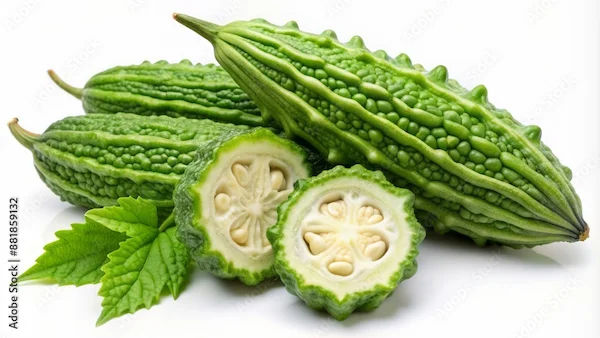Pudina (Mint): Ayurvedic Uses, Benefits, and Side Effects
Discover mint benefits and pudina uses in Ayurveda. Learn evidence-based perks, safe ways to try this ayurvedic herb, and possible side effects.


Introduction
Mint, commonly known as pudina in India, is one of the most widely used herbs in Ayurvedic medicine and everyday cooking. Renowned for its cooling, refreshing aroma and flavour, mint has long been incorporated into teas, chutneys, salads, and digestive remedies. Many people reach for mint tea after a heavy meal, enjoy mint chutney with snacks, or use mint to freshen their breath and feel a cooling effect during hot weather.
But what does modern research say about mint benefits, and how do traditional Ayurvedic uses align with evidence-based findings? This comprehensive guide explores the science behind mint, its historical and culinary uses, potential health effects, safety considerations, and practical ways to incorporate mint into daily life. By understanding both traditional wisdom and modern evidence, you can enjoy mint confidently while making informed choices about its use.
Consult a Top Ayurveda Specialist for Personalised Advice
What Is Pudina or Mint?
Mint refers to a family of aromatic plants belonging to the Mentha species. These plants are prized for their unique flavour, cooling sensation, and distinct aroma.
Common Culinary Types
Peppermint (Mentha × piperita)
- Contains higher levels of menthol
- Offers a sharper, more pronounced cooling effect
- Often used in teas, oils, and supplements
Spearmint (Mentha spicata)
- Milder flavour, sweeter aroma
- Frequently used in salads, beverages, chutneys, and desserts
Key Compounds in Mint
- Menthol and menthone – prominent in peppermint, responsible for its cooling effect and potential digestive benefits
- Carvone – dominant in spearmint, contributes to aroma and a milder taste
These naturally occurring compounds are linked to both flavour and potential physiological effects, including digestive comfort, soothing sensations, and topical relief when applied in diluted oils
Mint’s aromatic profile and chemical constituents make it suitable for culinary, medicinal, and aromatic purposes.
Pudina Uses in Ayurveda and Everyday Life
Traditional Ayurvedic Perspective
In Ayurveda, pudina is regarded as a cooling herb that balances excess pitta dosha (associated with heat, inflammation, and irritability). Traditional applications include:
Supporting digestion and easing gas or bloating
Freshening breath naturally- Soothing the throat and mild cough
- Providing a calming, cooling effect during hot weather
These practices have informed centuries of herbal use in India, guiding the inclusion of mint in teas, kadha (herbal decoctions), chutneys, and powdered mixtures. While this historical and experiential knowledge is valuable, it is essential to understand that scientific evidence for some benefits is limited or preliminary, and traditional remedies do not replace medical advice.
Top Evidence-Backed Mint Benefits
Modern research has evaluated mint, especially peppermint oil, for specific health concerns. Below are areas where mint shows the most promise:
Digestive Comfort and IBS Symptoms
- Enteric-coated peppermint oil capsules have been studied for irritable bowel syndrome (IBS)
- Clinical trials suggest they can reduce:
- Abdominal pain
- Gas and bloating
- General digestive discomfort
- Mechanism: peppermint relaxes smooth muscles in the gut
- Evidence is strongest for short-term symptom relief, not a cure
- Only enteric-coated capsules are effective; standard oil may break down in the stomach and cause irritation
Functional Indigestion (Dyspepsia)
- Mixtures of peppermint oil and caraway oil have shown benefits for mild upper abdominal discomfort
- May relieve post-meal fullness or bloating
- Results vary based on product quality and individual response
Tension Headaches (Topical Use)
- Diluted peppermint oil applied to the temples or forehead may provide modest relief for tension-type headaches
- Users often report a cooling, soothing sensation that eases discomfort
- Effects are temporary and should be combined with other stress-relief practices
Cold and Congestion Sensations
- Menthol in mint can create a perception of nasal openness, although it does not actually improve airflow
- Mint balms, steam inhalation, or teas provide a comforting cooling effect during colds or congestion
- Helpful for symptomatic relief, but not a cure for respiratory infections
Nausea and Aromatherapy
- Evidence for peppermint aroma alleviating nausea is mixed
- Some studies suggest potential benefit for postoperative nausea or pregnancy-related nausea, but results are inconsistent
- Pregnant individuals should always consult their clinician before using essential oils
How to Use Pudina Safely?
The ideas for pudina use are:
Culinary Uses (Generally Safe for Most People)
Add fresh mint leaves to:
- Chutneys and raitas
- Salads and smoothies
- Soups, curries, and beverages
Brew mint tea:
- Use fresh or dried leaves
- Caffeine-free and soothing
- Infuse water with mint and citrus for a refreshing drink that encourages hydration
Herbal Tea
- Safe for most healthy adults in culinary amounts
- If you have reflux or GERD, introduce tea gradually, as mint can sometimes worsen heartburn
Peppermint Oil Capsules
Specifically studied for IBS-like symptoms in enteric-coated form
Safety tips:
- Select reputable brands
- Follow the dosing instructions carefully
- Consult a clinician if you have chronic digestive issues or take medications
- Avoid taking with antacids, which can damage the enteric coating
Topical Peppermint Oil
Always dilute properly before applying
Avoid contact with:
- Eyes
- Inside the nose
- Broken skin
- Never use on infants' or young children’s faces/chests
Aromatherapy
- Use a diffuser as directed
- Ventilate the room to avoid headaches or irritation from strong scents
Potential Side Effects and Risks
The side effects and risks include:
Most culinary uses are well tolerated. Concentrated oils and high doses carry a higher risk:
- Heartburn and reflux – peppermint relaxes the lower oesophageal sphincter, potentially worsening GERD
- Stomach discomfort – undiluted oil may irritate the gut
- Mouth and throat irritation – strong lozenges or oils may burn
- Skin reactions – rash or irritation if oil is undiluted
- Allergic reactions – rare but possible
- Infants and children – risk of breathing problems if applied incorrectly; essential oils should be avoided
Who Should Be Careful or Avoid Mint Products?
It includes:
- People with GERD, hiatal hernia, or frequent heartburn
- Those with liver, gallbladder, or bile duct concerns – consult a clinician before use
- Pregnant or breastfeeding – culinary use is usually safe; avoid concentrated oils without advice
- Infants and young children – avoid essential oils entirely
- People taking multiple medications – peppermint oil may interact or affect absorption
Pudina in the Kitchen: Practical Tips
- Buying fresh: Look for vibrant green leaves, avoid yellowing or wilted ones, and check the aroma
Storing:
- Place stems in a glass with water in the fridge, loosely covered
- Alternatively, wrap in a damp towel in a container; use within a few days
Drying:
- Air-dry in a shaded, ventilated area
- Store crumbled leaves in airtight jars away from light and heat
Quick culinary ideas:
- Mint-coriander chutney for snacks or rice dishes
- Mint-lime water for summer hydration
- Mint raita with cucumber as a cooling side
- Mint tea after meals for a gentle, aromatic finish
Mint Benefits vs. Myths: What We Know
Let us see the mint benefits versus myths
Well-supported benefits:
- Short-term relief of IBS-type abdominal pain and bloating using enteric-coated peppermint oil
- Modest relief for tension headaches with topical peppermint applications
Potential benefits for some people:
- Functional indigestion with peppermint/caraway oil combinations
- Sensory perception of nasal comfort during colds
Myths and unproven claims:
- Weight loss – no evidence that mint directly burns fat
- Immunity boosting – mint does not prevent infections
- Cure-alls – mint does not cure IBS, colds, or chronic conditions; only symptomatic relief in some cases
When to See a Healthcare Professional?
The time to visit a healthcare professional is:
- Persistent digestive discomfort, bloating, or changes in bowel habits
- Severe or worsening heartburn, difficulty swallowing, or unexplained weight loss
- Frequent nausea or vomiting
- Severe or frequent headaches
- Pregnancy, breastfeeding, chronic illness, or multiple medications before starting supplements or oils
Key Takeaways
The key takeaways include:
- Pudina is a versatile Ayurvedic herb and kitchen staple with centuries of digestive and cooling use
- Best-studied benefits: IBS symptom relief (enteric-coated peppermint oil) and tension headache relief (topical use)
- Culinary uses like tea and fresh leaves are generally safe; concentrated oils require caution
- Individuals with reflux, pregnancy, or chronic conditions should consult a clinician before using supplements
- Choose high-quality products, follow dosing and usage instructions, and enjoy mint as part of a balanced approach to wellness
Conclusion
Pudina is a classic herb with rich traditional and culinary uses in Indian kitchens. It offers mild digestive relief, cooling effects, and soothing aromas when used appropriately. Modern research supports specific applications like IBS symptom relief and tension headache management, but claims of fat burning, immunity boosting, or curing chronic illnesses are unfounded. Most people can safely enjoy mint in food, teas, and drinks, while concentrated oils should be used with caution and professional guidance. By combining traditional knowledge with evidence-based precautions, pudina can remain a safe, versatile, and enjoyable herb that supports digestive comfort, refreshment, and a sense of cooling calm in daily life.
Consult a Top Ayurveda Specialist for Personalised Advice
Consult a Top Ayurveda Specialist for Personalised Advice

Dr. Pepsy Jose
Panchakarma Practitioner
14 Years • BAMS, MD Ayurveda (Panchakarma)
Bengaluru
AYURRHYTHM HOLISTIC CLINIC AND PANCHAKARMA THERAPY, Bengaluru

Dr. Shiv Prakash Singh
Ayurveda Practitioner
19 Years • BAMS
Kolkata
Vedhive Ayurveda College Street, Kolkata

Dr. Rik Sadhukhan
Ayurveda Practitioner
8 Years • BAMS
Kolkata
Vedhive Ayurveda, Ballygunge, Kolkata

Dr. Anjan Das
Ayurveda Practitioner
8 Years • Ayurvedacharya ( B.A.M.S )
Dumdum
Vedhive Ayurveda Clinic, Dumdum
Consult a Top Ayurveda Specialist for Personalised Advice

Dr. Pepsy Jose
Panchakarma Practitioner
14 Years • BAMS, MD Ayurveda (Panchakarma)
Bengaluru
AYURRHYTHM HOLISTIC CLINIC AND PANCHAKARMA THERAPY, Bengaluru

Dr. Shiv Prakash Singh
Ayurveda Practitioner
19 Years • BAMS
Kolkata
Vedhive Ayurveda College Street, Kolkata

Dr. Rik Sadhukhan
Ayurveda Practitioner
8 Years • BAMS
Kolkata
Vedhive Ayurveda, Ballygunge, Kolkata

Dr. Anjan Das
Ayurveda Practitioner
8 Years • Ayurvedacharya ( B.A.M.S )
Dumdum
Vedhive Ayurveda Clinic, Dumdum
More articles from General Medical Consultation
Frequently Asked Questions
Is peppermint tea safe to drink every day?
- Yes, in typical culinary amounts for most healthy adults
- People with GERD or frequent heartburn should monitor reactions and start small
Can mint cure IBS?
- No. Enteric-coated peppermint oil may relieve symptoms but is not a cure
- A comprehensive management plan including diet, stress control, and lifestyle is essential
Does mint help with weight loss?
- No strong evidence supports direct fat burning
- Mint can enhance flavour, potentially supporting healthier choices
What’s the difference between spearmint and peppermint?
- Peppermint: higher menthol, sharper cooling effect, commonly studied for digestive and headache relief
- Spearmint: milder taste, higher carvone, often used in culinary dishes
Can peppermint help a cold or blocked nose?
- Menthol provides a perception of nasal clarity but does not improve airflow
- Avoid essential oils around infants, small children, or those with respiratory conditions




